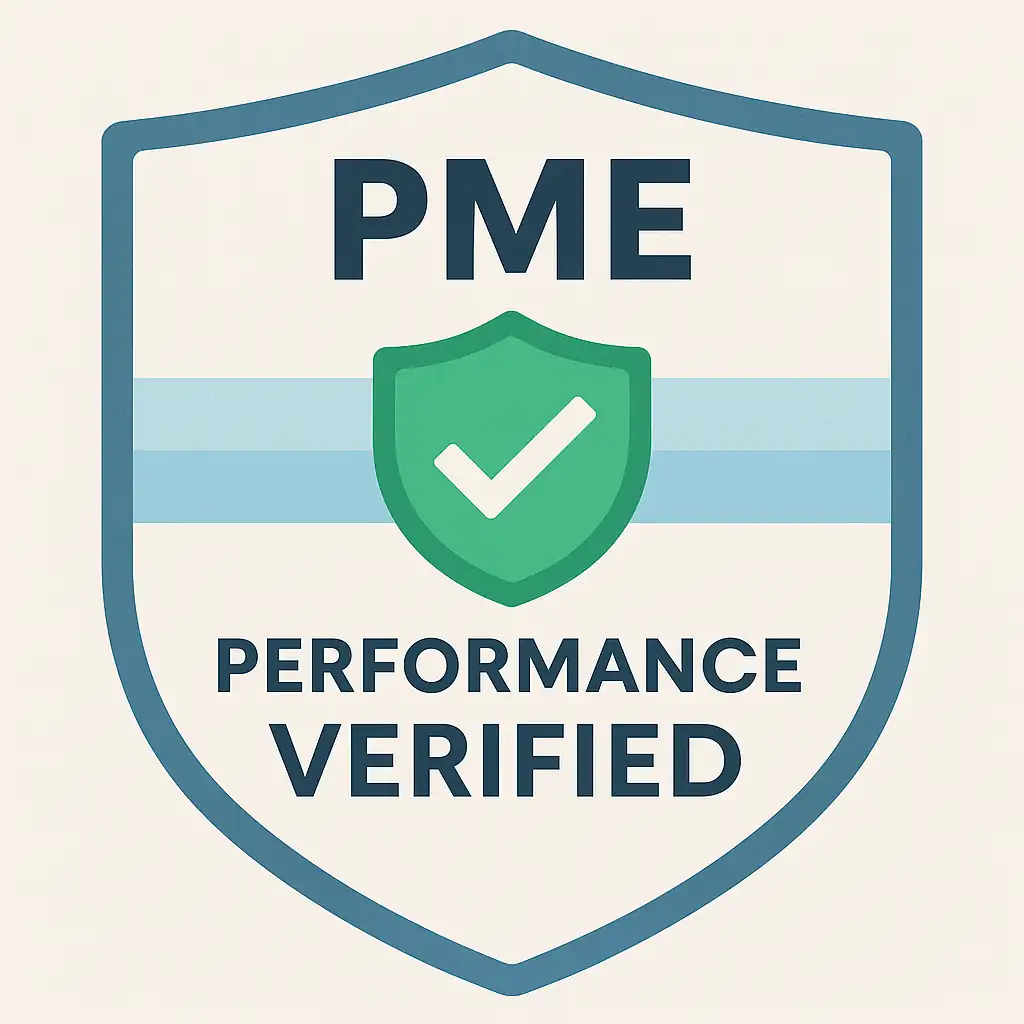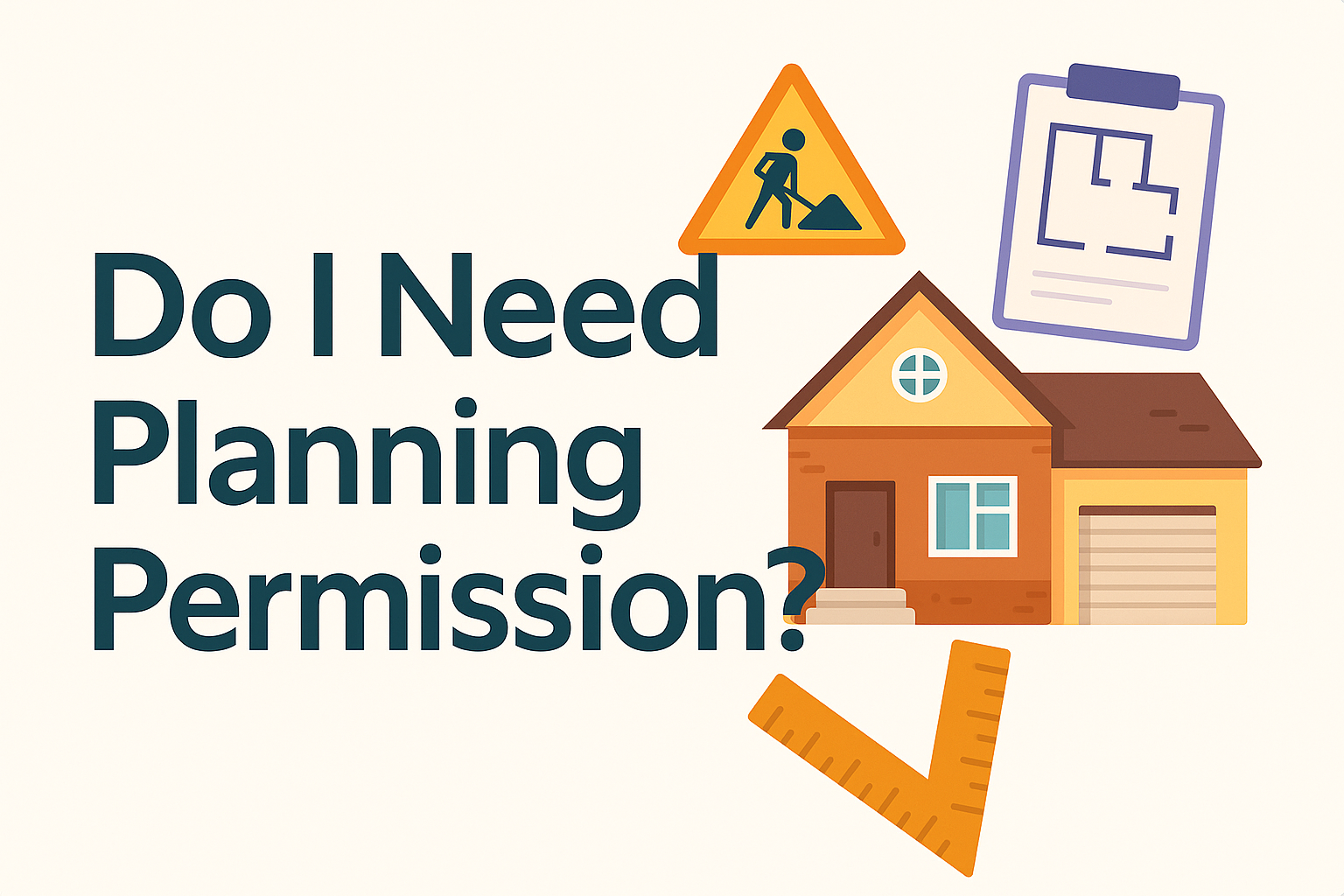Share this post:
Do I Need Planning Permission? (UK 2025 Guide)
A clear, plain-English guide to when you need planning permission, when you don’t, how much it costs, and the fastest way to move forward.
Need planning advice fast?
Get clear answers on extensions, drawings, and permissions without the stress.
Quick Summary
Short answer: You need planning permission for new buildings and larger changes that sit outside permitted development (PD) rules. Many small home projects (e.g., modest rear extensions, loft conversions, garden outbuildings) are PD if they meet size/height limits and site constraints. Planning permission is about town planning policy and neighbour impact; it’s separate from Building Regulations, which cover technical compliance (structure, fire, insulation, drainage).What is planning permission?
Planning permission is consent from your Local Planning Authority (LPA) to carry out certain types of development. It balances your project with local and national planning policy, neighbour amenity (light, privacy, outlook), heritage, highways, flood risk, and more.Tip: Planning permission and Building Regulations are different. You may not need planning permission, but you’ll almost always need Building Regulations approval for structural/thermal compliance.
When do I need planning permission?
You’ll typically need permission if you are:- Building something new (a dwelling, a large extension, or a substantial outbuilding).
- Extending beyond the limits set by permitted development (PD).
- Changing the use of a building or land (e.g., converting to flats or business use).
- Working on a listed building (you’ll also need Listed Building Consent).
- In a conservation area or where an Article 4 Direction removes PD rights.
Important: Starting work without required planning permission risks enforcement action, including being told to reverse or remove the works.
Permitted development vs planning permission
Permitted Development (PD) allows certain home improvements without a planning application, provided you meet strict rules on size, height, siting, and appearance. If you exceed those limits, or your site is restricted, you’ll need planning permission.- PD is rules-based: if you meet every criterion, you don’t need planning permission.
- Planning permission is policy-based: the LPA weighs design and impact before deciding.
Note: For some single-storey rear extensions you can use the Larger Home Extension prior-approval route (a neighbour consultation process). It’s faster than full planning but still needs council sign-off.
Common projects — do I need planning permission?
Extensions
- Single-storey rear extension: often PD within depth/height/material limits. Larger depths may use the Larger Home Extension prior-approval route (detached up to 8m; semis/terraced up to 6m), subject to neighbour consultation.
- Two-storey/side/front extensions: commonly need planning permission.
- Single storey extension (explicit): If you exceed PD (depth/height/eaves/coverage), you will need planning permission.
Conservatory
Often PD if at the rear and within PD limits. Larger/side/front conservatories usually need planning permission.Loft conversion
Most lofts are PD (dormer to rear, volume limits, no roof raising). Dormers facing a highway or raising ridge/hip typically need planning permission.Garage (new or conversion)
- New garage/outbuilding: may be PD if within height/footprint rules and ancillary to the house.
- Garage conversion to habitable room: sometimes PD internally, but check conditions on previous permissions; external changes may trigger planning.
Shed / Garden room / Summer house / Pergola
Usually PD if under 2.5m high within 2m of boundary (higher set-backs allow more height), not forward of the principal elevation, and not for self-contained sleeping accommodation. Pergolas are typically PD when open-sided and modest height.Porch
PD if under 3m high, not exceeding 3m², and >2m from a highway boundary. Bigger porches need planning.Driveway / Hardstanding
Paving over more than 5m² with impermeable materials and no provision for runoff requires planning permission. Permeable systems are usually PD.Solar panels
Generally PD on houses (conditions apply; more restrictions for listed buildings/conservation areas).Fence / Wall / Gates
Planning permission is required if over 2m high (or over 1m adjacent to a highway). Conservation/listed contexts can add controls.Static caravan
If used as independent residential accommodation, planning permission is normally required. Short-term/ancillary use can be different — check with your LPA.Change of use
Some changes are PD under Use Class rules; many still need planning permission. Always check before committing.Tip: Ownership doesn’t grant automatic rights — development is controlled by planning law. You may need permission “on your own land” depending on what you propose.
How much does planning permission cost?
Fees are set nationally but vary by application type and nation:- England (2025): Householder application typically in the £250–£300 range; more complex/full applications can be £625+.
- Scotland: Householder extensions are commonly around the £300 mark.
- Wales: Householder fees are broadly £230–£260.
- Plans & drawings: £500–£1,500+ depending on scope/options.
- Structural calculations (steelwork): £250–£600+.
- Building Regulations application: plan check + inspections (often £500–£1,200+, set by your Building Control body).
Note: Planning fees are payable to the council and are non-refundable if refused. Many homeowners opt for a pre-app chat or PD check first to de-risk.
The process (step-by-step)
- Check eligibility: Does your idea fit PD? Are there site constraints (Article 4, conservation, listed)?
- Choose the right route: PD, Larger Home Extension prior approval, or Full Householder planning.
- Prepare drawings: Location/Block plans, existing/proposed plans & elevations; sections where helpful.
- Submit application: Forms, certificates, fee. LPA validates and starts consultation.
- Decision: Householder = ~8 weeks; LHE prior approval = 42 days. Conditions may apply.
- Next stage: Building Regulations drawings and structural calcs for builders and compliance.
Tip: Want builder quotes that are realistic? Get your Building Regs drawings and structural design completed — that’s what contractors price accurately.
Frequently Asked Questions
Do I need planning permission for a conservatory?
Often no if it’s at the rear and within PD limits; yes if it’s large, at the front/side, in a restricted area, or affects highways elevation.How much does a planning permission cost?
Householder applications in England sit roughly in the £250–£300 range in 2025; full applications and other nations vary.Do I need planning permission for an extension / single storey extension?
Within PD (depth/height/eaves limits) you may not; beyond those limits you will. Two-storey extensions typically require full planning.Do I need planning permission for a shed / summer house / garden room / pergola?
Usually PD if under 2.5m high within 2m of boundary, not forward of principal elevation, and not used as self-contained living space.Do I need planning permission for a loft conversion?
Most are PD (rear dormer within volume limits). Raising the roof height or front dormers facing highways typically need permission.How much is planning permission for a fence?
If your proposal needs an application (e.g., over 2m or 1m near a highway), expect householder-level fees. Under PD height, no planning fee is needed.Do I need planning permission for a garage or to convert my garage?
New garages can be PD if within limits; garage conversions can be PD internally but external changes/conditions may trigger planning.Do I need planning permission for solar panels?
Generally PD with conditions; listed buildings/conservation areas may restrict locations or require consent.Do I need planning permission for a porch?
PD if under 3m high, ≤3m², and >2m from a highway boundary. Otherwise, apply.Do I need planning permission for a driveway?
Planning permission is required if you pave more than 5m² with impermeable surfacing and no drainage. Permeable solutions are PD.How much is planning permission for an extension / a house / Scotland / Wales?
England householder ≈ £250–£300; full applications can be £625+. Scotland and Wales have similar householder bands around £230–£320.Do you need planning permission for permitted development?
No — if your project meets all PD rules. Many owners still request a Lawful Development Certificate as formal proof.When do I (not) need planning permission? How do I know?
Use the Planning Portal and check PD criteria for your project type; ask your LPA or a designer for confirmation. You don’t need it when fully within PD and not restricted by Article 4/listed/conservation constraints.Static caravan — do I need planning permission?
Yes if used as independent residential accommodation; ancillary/temporary cases vary — always check with your LPA.Why do I need planning permission on my own land?
Because planning controls are about use, design, and impact on others/environment — not ownership.Conclusion
If your idea fits the permitted development rules, you won’t need planning permission. If it doesn’t — or your site is constrained — plan on a householder application (or a Larger Home Extension prior approval where applicable). Either way, you’ll still need Building Regulations drawings and structural design to build smoothly and to get accurate builder quotes.Ready to move your project forward?
Plans Made Easy can prepare compliant plans, manage submissions, and guide you from idea to approval.

Performance Verified ✅
This page meets PME Optimisation Standards — achieving 95+ Desktop and 85+ Mobile PageSpeed benchmarks. Verified on


